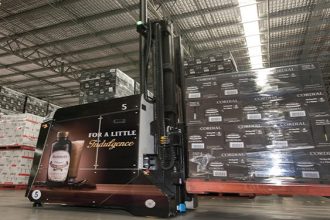For a Successful Software Implementation, Focus on the People

By focusing on people, processes, and product, you can raise the odds of a good roll out.
Few warehouses operate without software these days, but as fast as technology changes, upgrades and new systems are also a perpetual part of the package. When contemplating a new implementation, the best approach can be a collaborative, crowd-sourced approach. Following what is known as a “3 Ps Implementation” process, you can achieve the goals you’re after with your new software.
The three Ps stand for people, processes, and product. You need to keep all three in mind for the optimal software implementation project. Drilling down on each, here are the factors to consider:
People—When considering a software implementation, keep in mind that the tools are only as effective as the people who are using them. Getting your staff involved in the solutions design can be a critical piece of your implementation’s success. Past, more traditional methods of software implementation might have involved an engineer who designs the new warehouse layout, processes the change management to implement a new warehouse and then the users adapt to whatever that looks like. Instead, ask your staff how to go about selecting, configuring, and implementing your warehouse software. Yes, your engineers will guide their input, but by allowing them to be deeply involved and engaged in the outcome, you’ll come up with a better roll out and faster results.
Processes—Much like the people step, when you define the processes, you’ll be tackling with implementation, involve those on the floor. They are aware of the details of operations, what works, what doesn’t, and can be essential to mapping out your future processes to be managed by your software. It’s an intricate and adaptive exercise, and by bringing your staff on board, your processes will emerge faster and more efficient.
Product—How is the ultimate product configured? How is it optimized for your specific environment? Again, your users should be deeply involved, and the effort should result in an agile warehouse, able to adapt to current requirements and evolve as your business needs change.
For a 3P implementation, you’ll want to appoint a change management team, largely made up of those end users. Alongside your engineers and partners, they’ll be able to design a system from the ground up rather than one pushed down from the top. With additional feedback from a wider range of stakeholders, risk is reduced in the overall solution. When rolled out in the right place, at the right time and with the right people involved, you’ll be able to create just the right system for your specific needs.
There are, of course, exceptions to this approach. The biggest is an operation that depends heavily on temporary labor. These employees usually aren’t on the floor long enough to have a good understanding of what works and what doesn’t, nor do they have skin in the game. In these cases, focusing on team leads and operations management who are consistently involved may be a better option.
In most other cases, however, turning to those who understand your entire operations (including business model and metrics) will lead to improved processes and often creates a more effective and engaged operation.
For more information about the Solutions Community: mhi.org/solutions-community
For further articles from the Solutions Community:
Sustainability in the Warehouse—Part 1
How to Use Software to Attract and Retain Talent
Digitization of Intralogistics: Software
Forward Pick Area—Design and Operations
Maintenance Check: From Reactive to Predictive
Digitization of Intralogistics—Replenishment



